A hitchhiker’s guide to manta rays - Patterns of association between Mobula alfredi and M. birostris and their symbionts in the Maldives
2020
Aimee Nicholson-Jack (MSc Global Wildlife Health and Conservation - University of Bristol)
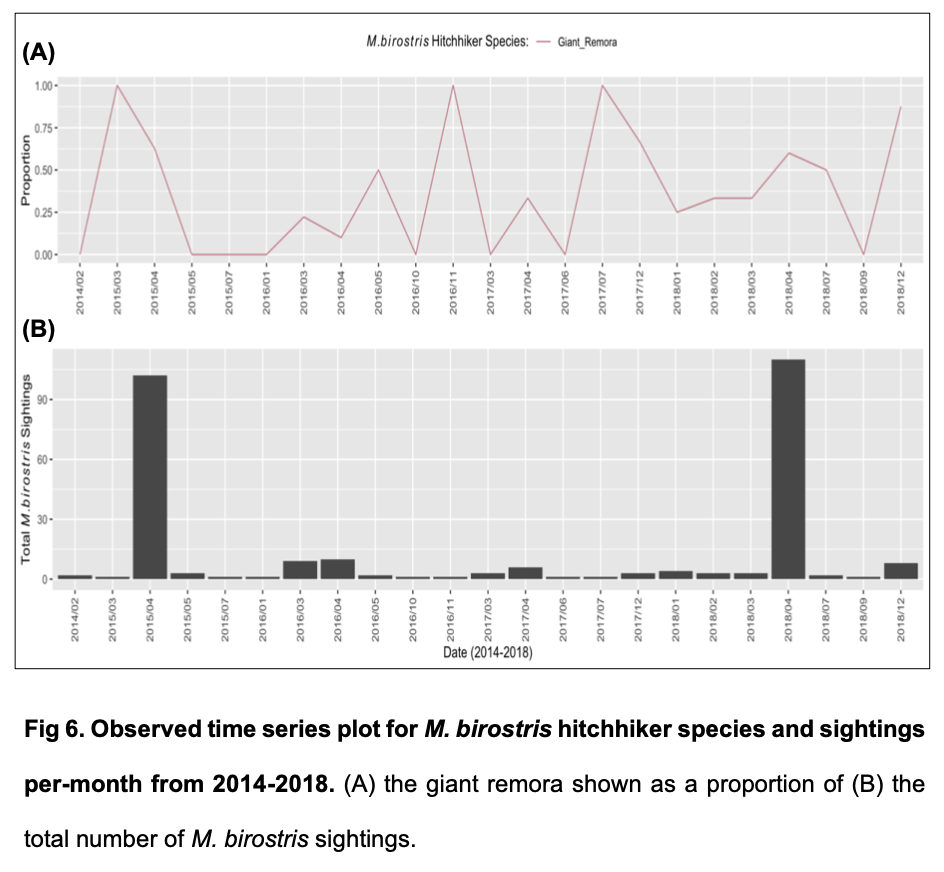
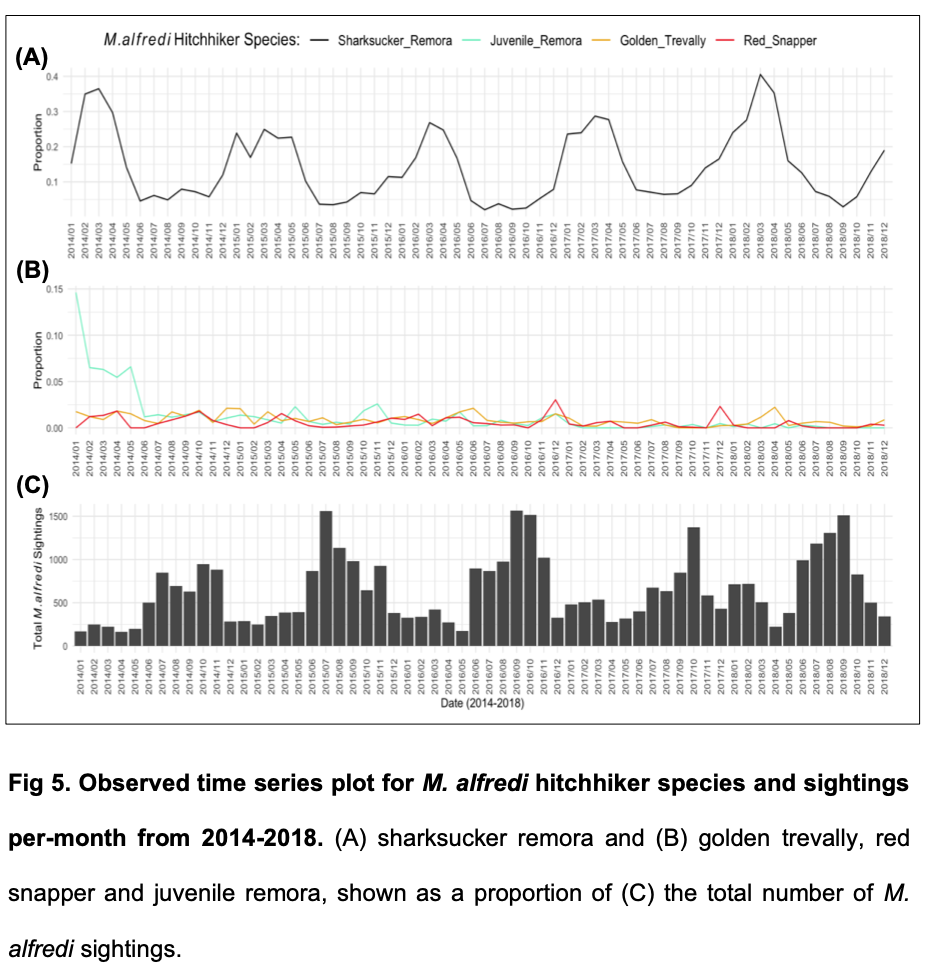
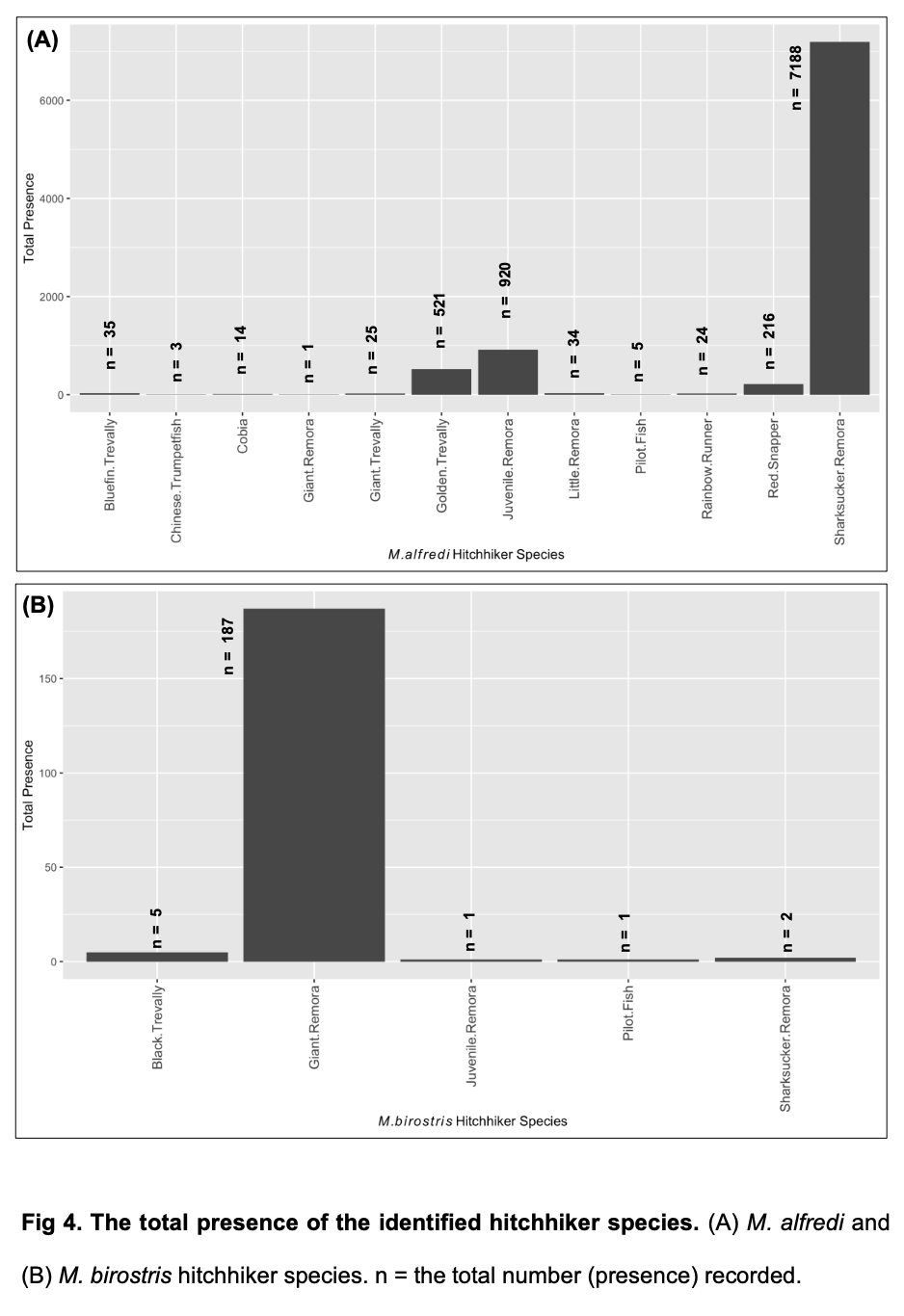
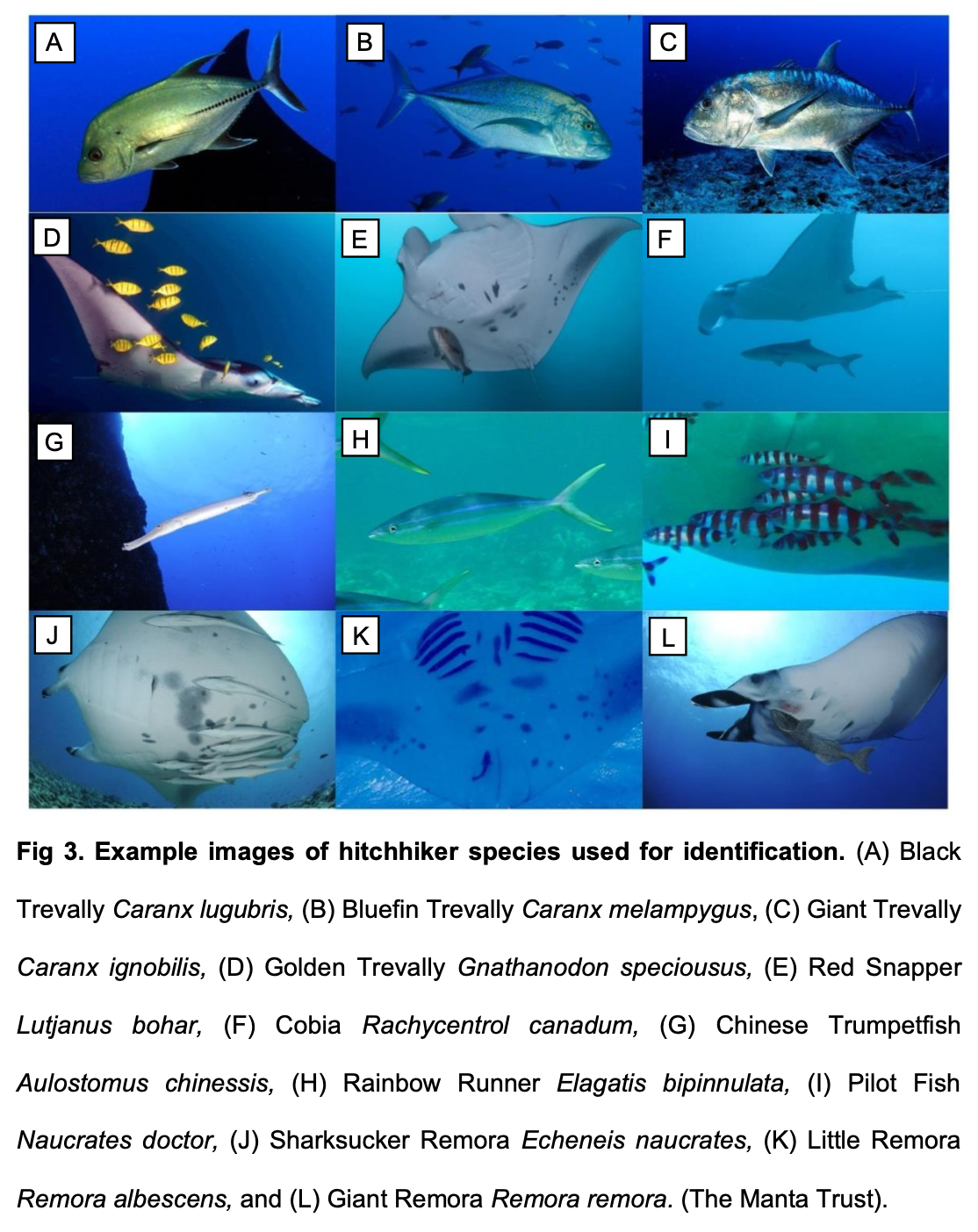
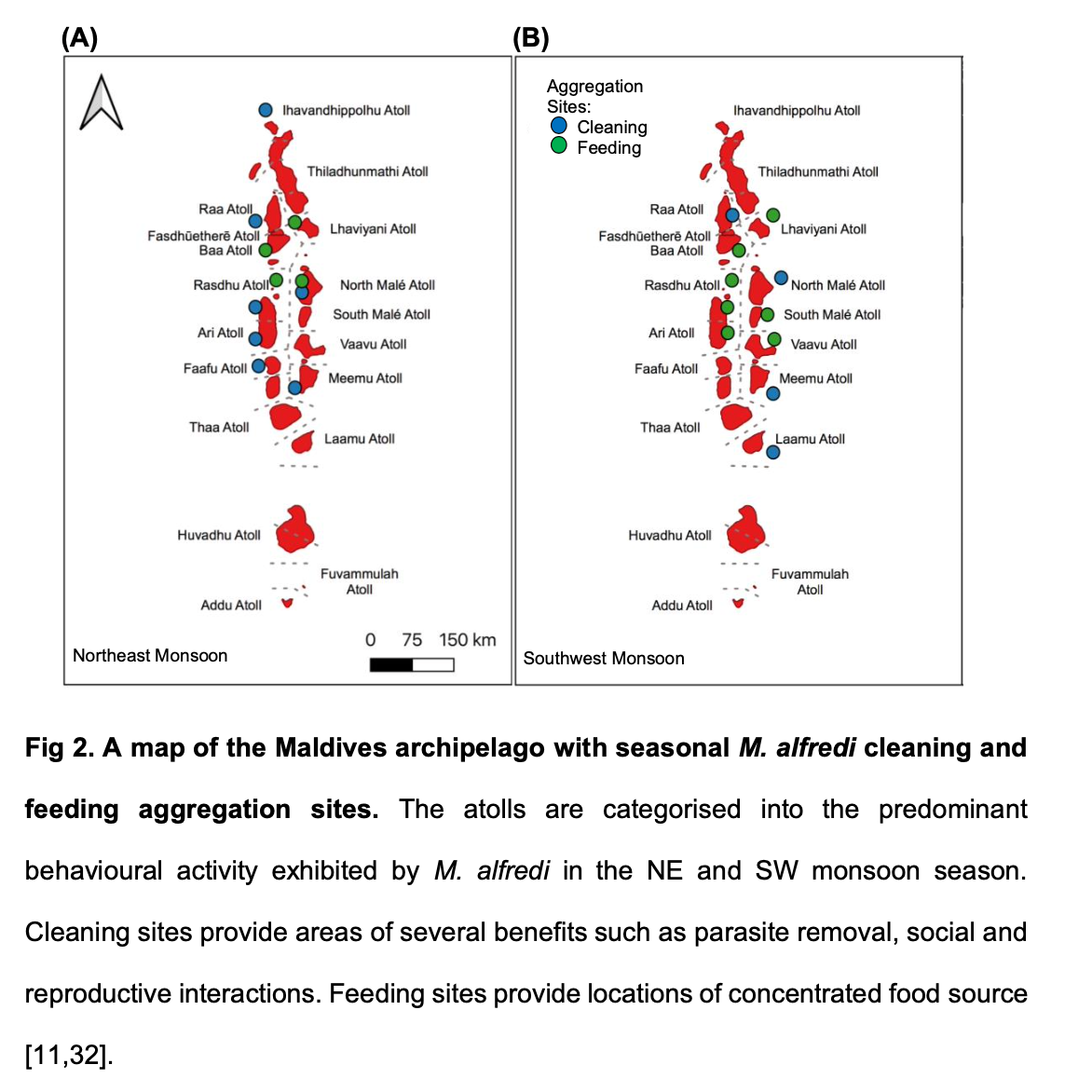
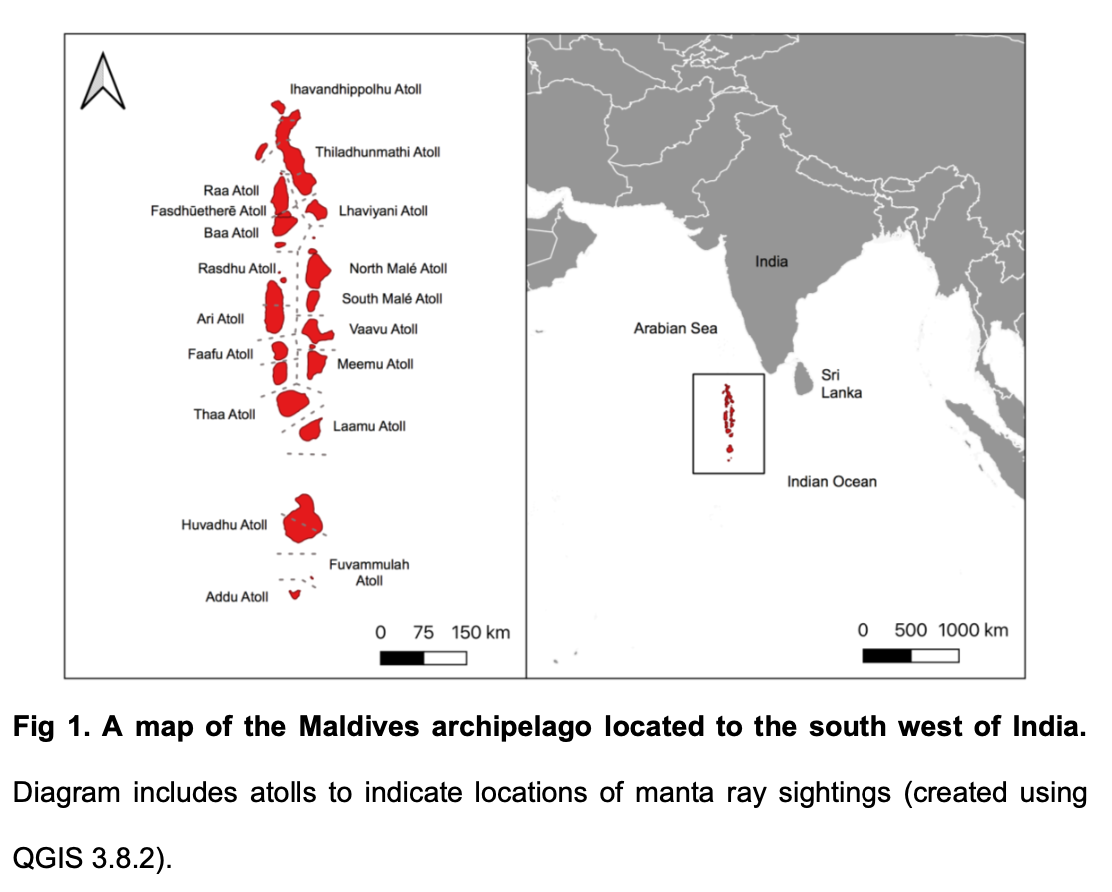
Summary: Manta rays are intriguing and understudied creatures in the marine environment. They often host smaller hitchhiker species that seek shelter and sustenance. Previous research has shed light on the relationship between manta rays and remora species within the Echeneidae family. However, the overall patterns between manta rays and all their hitchhiker species remain unknown. This study examines the associations between manta rays and their hitchhikers in the Maldives using long-term photographic data. The presence of different hitchhiker species varied depending on factors such as manta ray sex, behaviour, and spatiotemporal factors. The study highlights the presence of various hitchhiker species, not limited to the Echeneidae family, and emphasises the need for a better understanding of the symbiotic interactions of manta rays in the face of anthropogenic impacts on the oceans.
Abstract
“Despite comprising some of the largest species in the marine environment, manta rays (Mobula alfredi, M. birostris) remain among the most enigmatic. Considerable knowledge gaps remain, particularly regarding their behavioural ecology. Manta rays are often sighted with an array of smaller hitchhiker species, which utilise their hosts as a sanctuary for the shelter, protection, and sustenance they provide. Research into the well-known remora hitchhiking species within the Echeneidae family and their diverse host species has revealed insights into manta ray behavioural and spatial ecology. However, the underlying patterns between manta rays and all of their hitchhiker species remain elusive. This study aims to explore these patterns of association between manta rays with all of their associated hitchhiker species in the Maldives. Utilising long-term photographic data, collected by the Manta Trust’s Maldivian Manta Ray Project, the factors influencing the presence of hitchhiker species such as manta ray sex and behaviour, as well as spatiotemporal factors, were analysed. Here for the first time, associations between M. alfredi and M. birostris with hitchhiker species other than those belonging to the family Echeneidae are described. A variation in the species of hitchhiker associated with M. alfredi and M. birostris was identified, with the sharksucker remora (Echeneis naucrates) and giant remora (Remora remora) being the most common respectively. The odds for hitchhiker species presence varied with the different explanatory variables. The presence of sharksucker remoras exhibited a marked seasonal variation, possibly influenced by the behavioural activity and spatiotemporal variation of M. alfredi. Biological associations are often one of the first components of biodiversity to be altered by abiotic change. Given the widespread effects that anthropogenic activities are having on the world’s oceans, a greater understanding of the symbiotic interactions of manta rays is essential.”
Author Affiliations
University of Bristol
The Manta Trust
